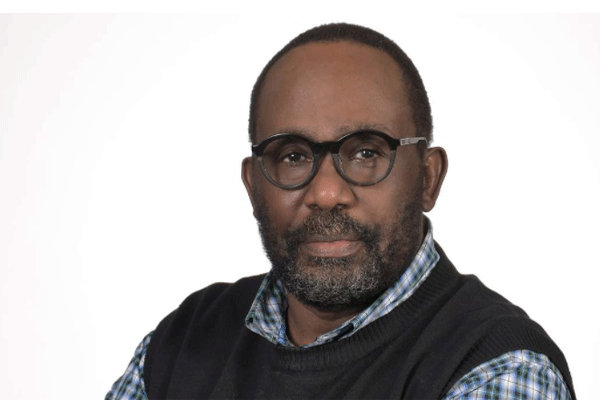Prime
Uganda has a big lunch date in 2040. Will it show up?

Author, Charles Onyango Obbo. PHOTO/FILE
What you need to know:
- Degraded administrative capabilities, increasing incompetence, and the fact that a huge chunk of the national budget is going into wasteful and corrupt consumption mean we are off target for 2040.
Not too long ago, the Uganda government was projecting that the country would achieve middle-income status by 2019-20. Even without the disruptions of Covid-19, the World Bank now sees us not getting there until 2040.
Most peoples’ 2040 projection is based, partly, on the expectation that Uganda’s oil will flow soon, and that there will be no Covid-level catastrophe, no major regional disruptions, and that the current touch-and-go stability will hold.
Also, it presumes the same “regime type” – a limited free-market-leaning military-civilian authoritarian, barely competent, government – will continue. It could hold, and we’ll make that lunch date with Miss Middle Income in 2040. It could also get worse, in which case Uganda could reach middle-income status only in 2060 or even 2100. Or it could improve dramatically, with a massive outbreak of democracy, enlightened and honest government, and runaway national innovation and creativity, in an East Africa which is on the roll.
Which of these three scenarios is likely? One thing that gives a hint is right before our eyes – the government supplementary budgets. As the Daily Monitor reported, “since the 2016/17 financial year, the supplementary budgets have come in droves.
Government has spent more than Shs11 trillion in the last five years in supplementary budgets, raising questions about its financial discipline and what the money is spent on.” Ministries are getting supplementary budgets that are larger than their regular budget, much like the wayward man who would wed his wife, then all her bridesmaids too.
A dissenting minority report of Parliament’s Budget Committee, the paper reported, faults the majority report for approving the latest supplementary budget of Shs54.35 billion, which it says was “for items foreseeable at the time of budgeting. Among these include Shs10 billion for procurement of vehicles under the Internal Security Organisation; Shs8.4 billion for purchase of vehicles for the Office of the President…” Yet, that precisely is the point.
President Yoweri Museveni’s government has continued to lose its bureaucratic and technocratic competence and traditions like planning ahead and providing resources for those plans. There is a degradation of both the NRM state and a change in regime type.
That lot of the supplementary budget goes to State House and security, in turn revealing the big comeback of the Ugandan securocracy. It had lost ground beginning the economic reforms of 1988 and the dramatic expansion of the Ugandan private sector and continued with the defeat of Joseph Kony’s LRA rebels and the return to peace in the north from 2002. Its weakest moment was the return to multiparty rule in 2005, and the contradictory opposite action of scrapping presidential term limits.
The fallout with allies Rwanda and rising tensions between the two countries; the 2006 election; Uganda’s entrance into the Somalia conflict as the first-in and lead continent of the AU peacekeeping force Amisom; and domestically the growing youthfulness and militancy of the Opposition, were manna from the heaven.
They formed a series of favourable factors that allowed the security complex to retake power, and through things like supplementary budgets hijack resources by means that are less subject to serious scrutiny.
Degraded administrative capabilities, increasing incompetence, and the fact that a huge chunk of the national budget is going into wasteful and corrupt consumption mean we are off target for 2040. Add to that, the uncertainties that have now firmly crept into Uganda about the Museveni succession, a process that could be drawn out for another nine years.
Regional politics too is iffy. The recent terrorist attacks in Kampala are symptomatic of an inability for the region’s government to establish a broad East African security arrangement to deal with violent extremists who, evidence now suggests, have established an impressive regional coordination network.
One reason is that many governments, beginning with Ethiopia up north, are themselves in crisis. However, in normal times, they have abysmally dealt with the risks of climate change.
To pick just one case; last year Lake Nalubaale (Victoria) flooded large parts of the region, as it reached its highest level in over six decades. If you look at the course of the Uganda oil pipeline to Tanga port, Tanzania, while Kampala claimed to have avoided the risk of Al-Shabaab threat by ditching the Kenyan route, the southern route is replete with environmental risks, especially as it passes through the areas abutting Masaka and Mutukula in Uganda, but particularly when its loops around Lake Nalubaale from Bukoba in Tanzania, and on to Singida.
Without major action, the lake could put paid to the oil pipeline in the very near future, and the magnitude of the disaster is too much to comprehend. Yet, in Kenya, Uganda, and Tanzania, the governments don’t seem to have a clue about what to do – or even to care. That 2040 date with the beautiful Miss Middle Income Status, might not happen.
Mr Onyango-Obbo is a journalist, writer and curator of the “Wall of Great Africans”. Twitter@cobbo3



